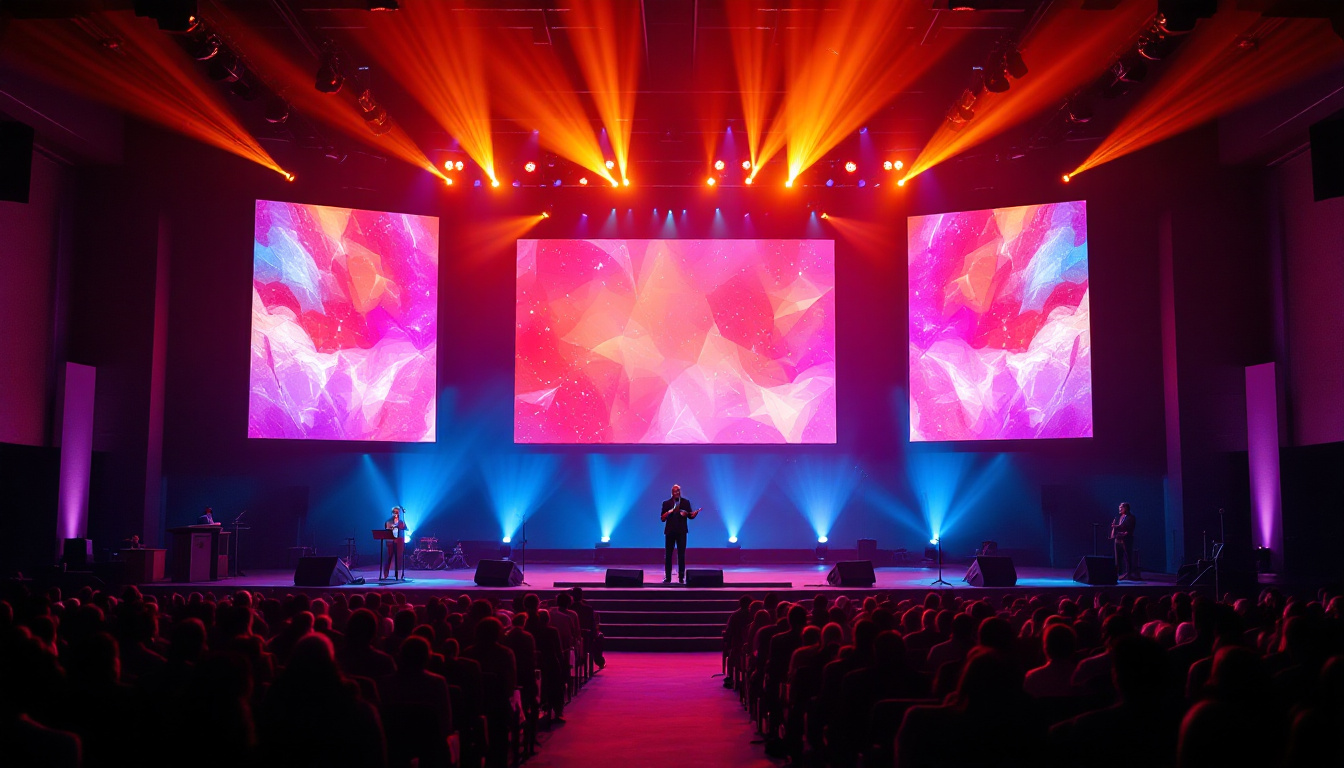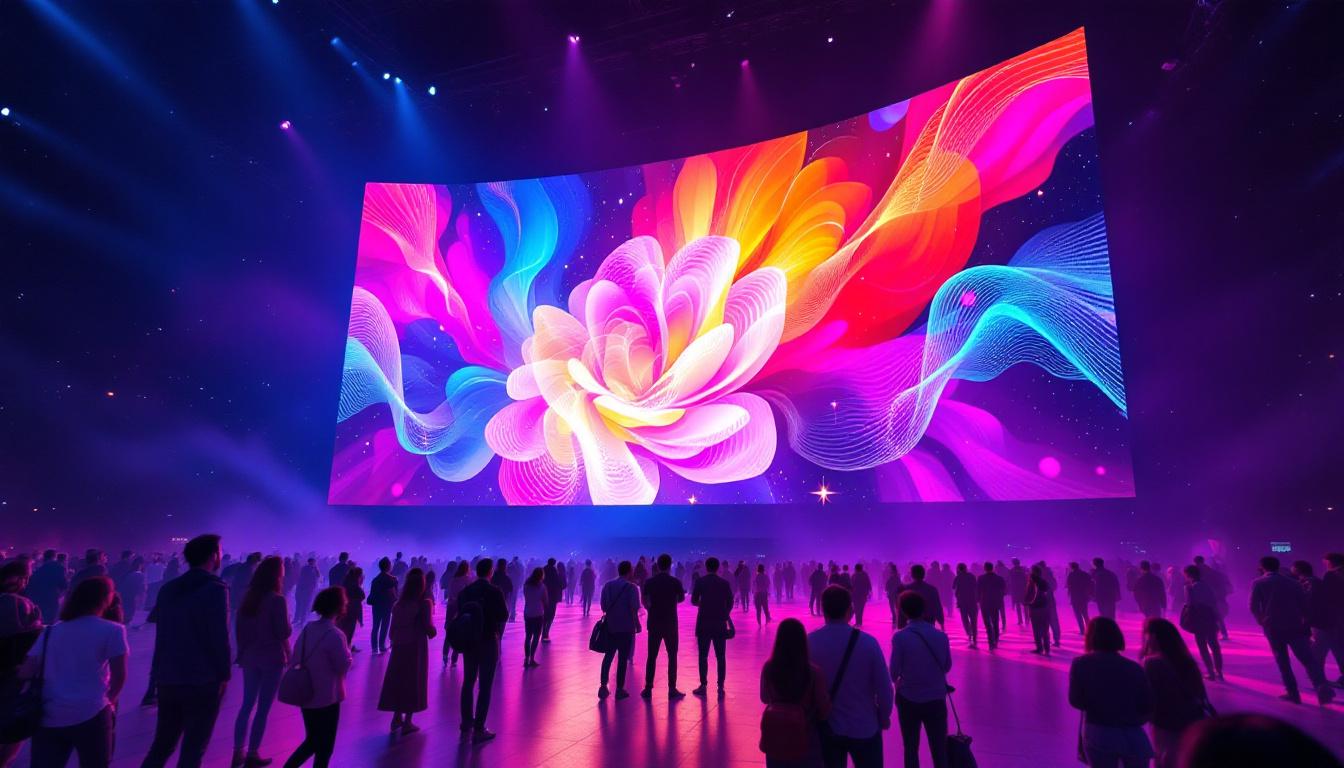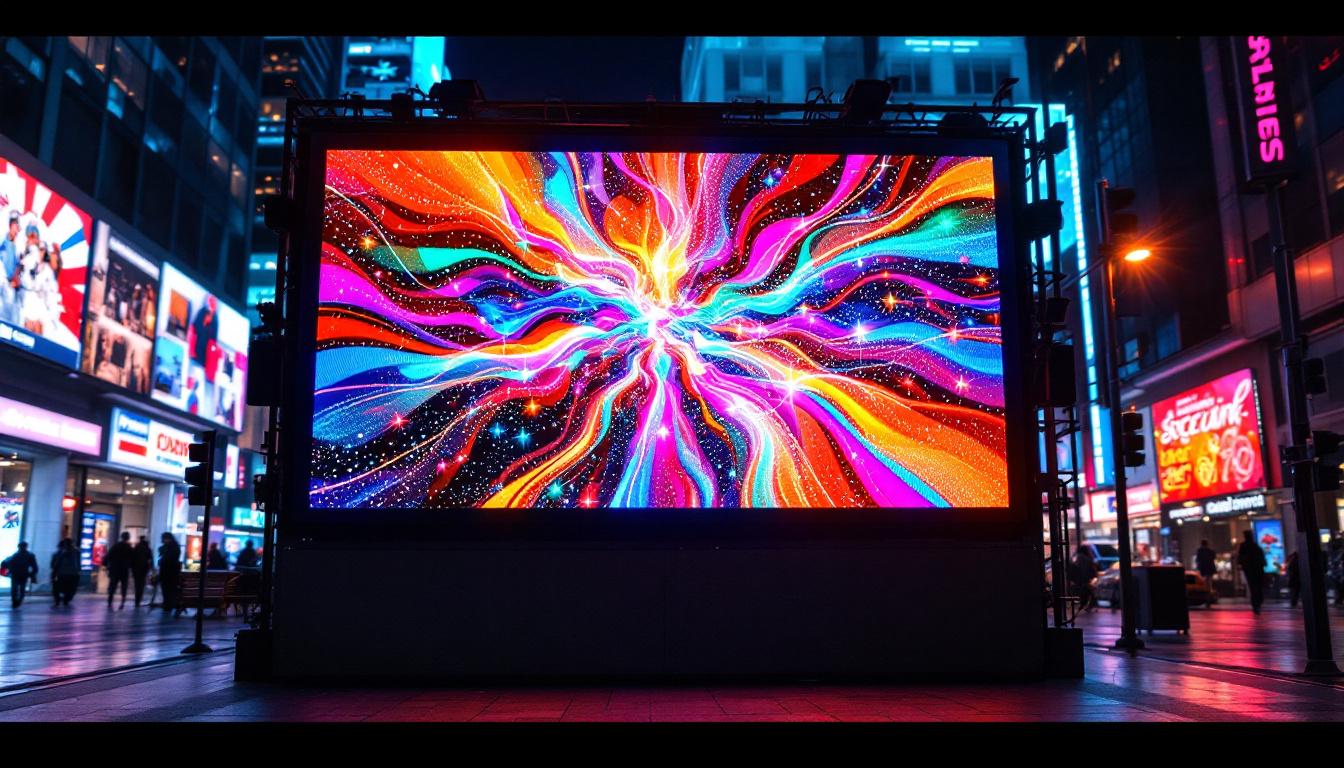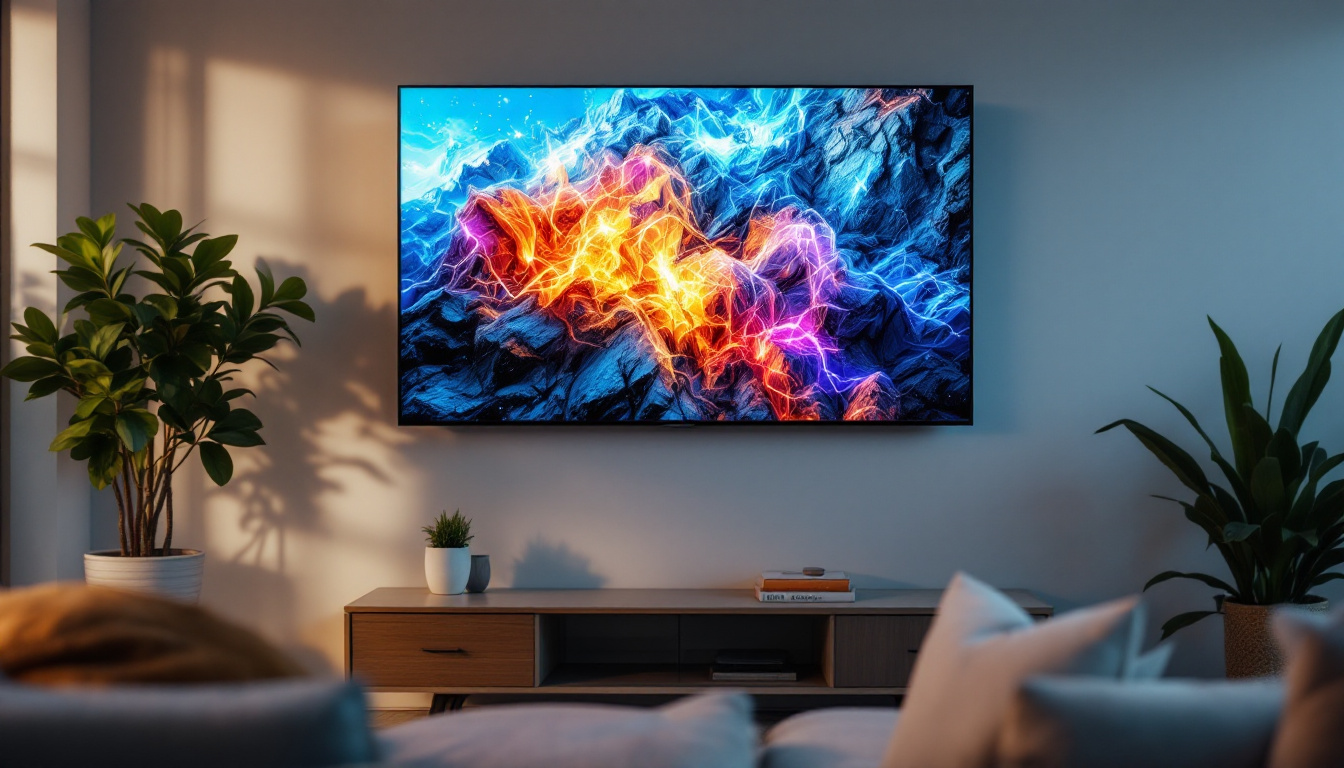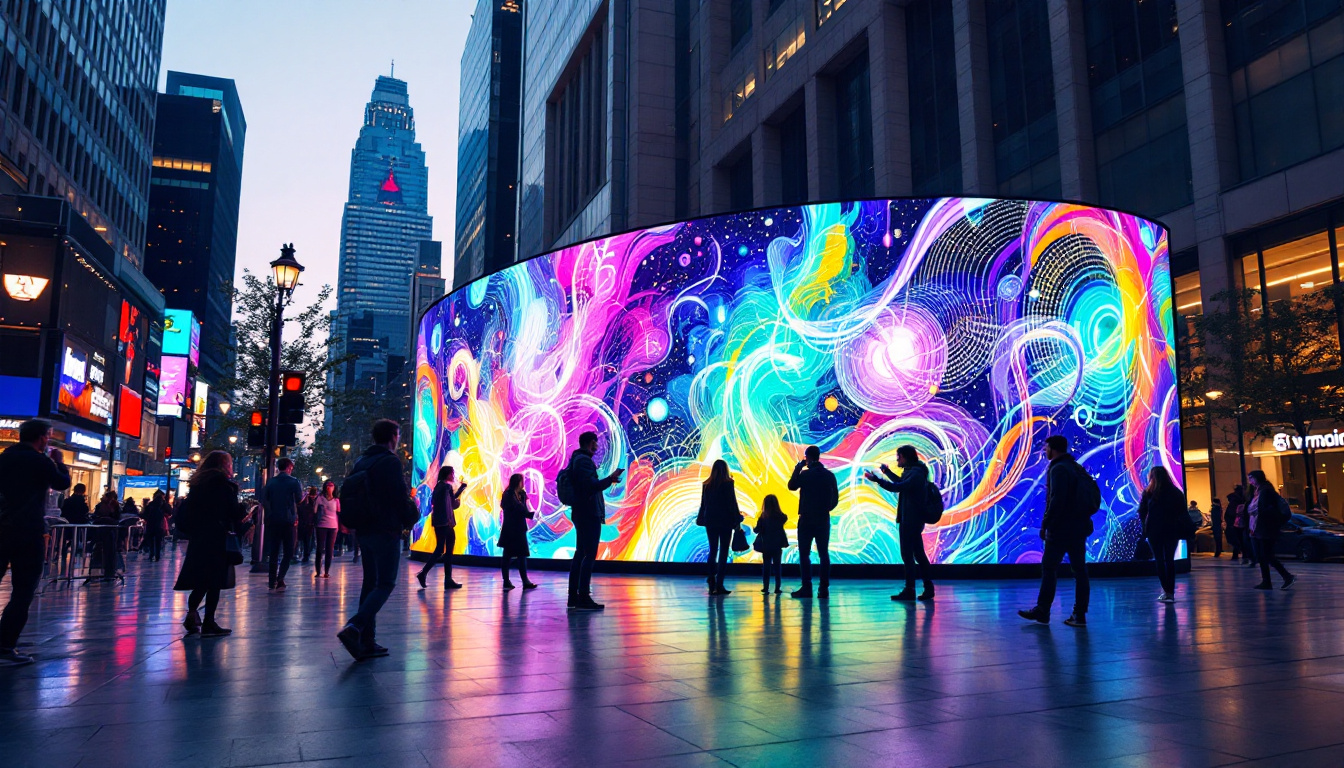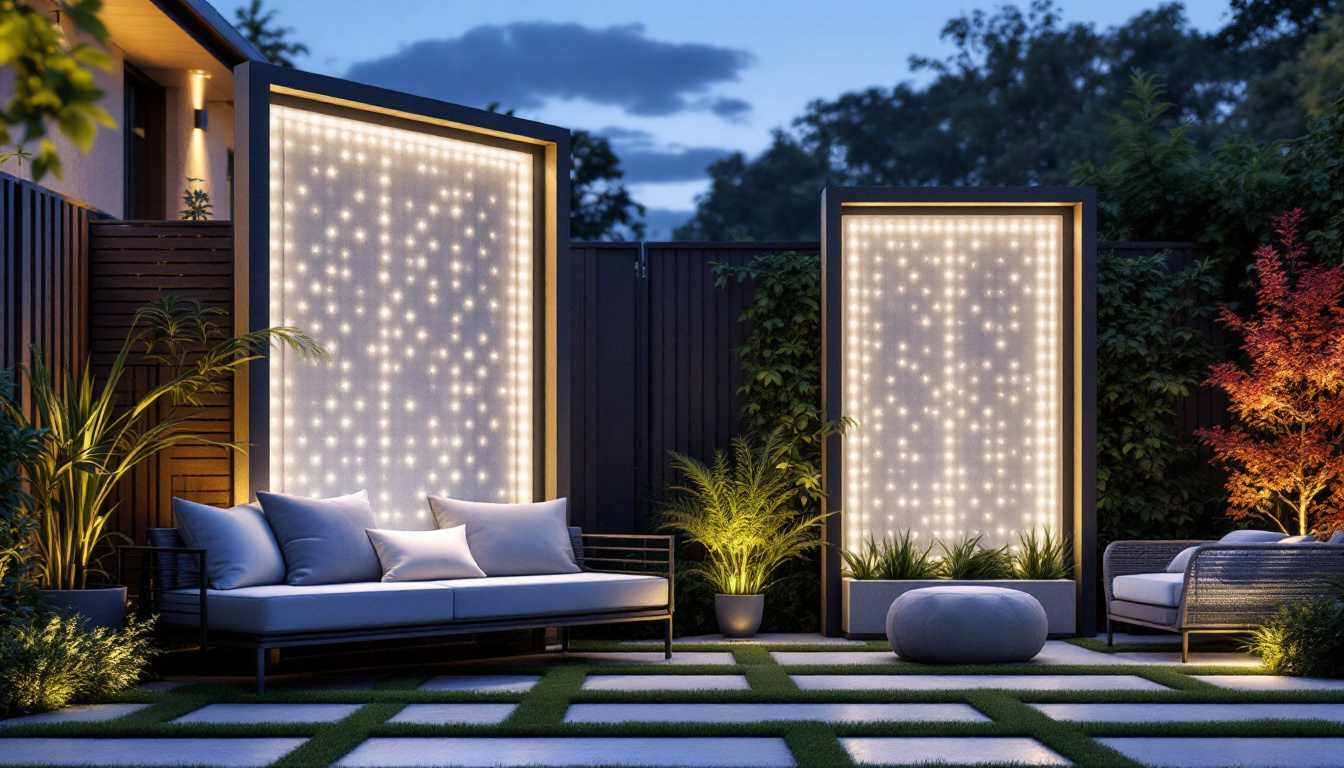In the modern era of worship, churches are increasingly adopting advanced technologies to enhance their services and create immersive experiences for their congregations. One of the most significant advancements in this regard is the use of LED displays as stage backdrops. This article delves into the various aspects of LED displays, exploring their benefits, applications, and considerations for churches looking to implement this technology.
Understanding LED Displays
LED displays are composed of numerous light-emitting diodes that work together to produce vibrant images and videos. Unlike traditional projection systems, which can be affected by ambient light and require specific viewing angles, LED displays offer superior brightness, color accuracy, and visibility from various distances and angles. This makes them an ideal choice for church stage backdrops, where visibility and aesthetics are paramount. The ability to display high-quality visuals can significantly enhance the worship experience, engaging congregants and creating a more immersive environment.
Furthermore, LED displays can be programmed to showcase a variety of content, including live feeds, pre-recorded videos, and even interactive elements. This versatility allows churches to tailor their presentations to match the theme of the service or event, fostering a deeper connection with the audience. With the right content management system, churches can easily update and manage their displays, ensuring that the visuals remain fresh and relevant.
How LED Displays Work
The technology behind LED displays involves a matrix of tiny diodes that emit light when an electrical current passes through them. These diodes can be arranged in various configurations, including full-color displays that combine red, green, and blue (RGB) lights to create a broad spectrum of colors. The images displayed on LED screens are generated by a computer system that controls the intensity and color of each diode, allowing for dynamic content that can change in real-time. This capability is particularly beneficial during services, as it allows for the seamless integration of lyrics, sermon notes, and multimedia presentations.
One of the key advantages of LED technology is its modular nature. LED panels can be easily assembled and disassembled, allowing churches to customize the size and shape of their displays according to the stage design and specific needs of each service or event. This flexibility not only enhances the aesthetic appeal of the stage but also enables churches to adapt their setups for different occasions, whether it’s a regular Sunday service, a special holiday event, or a community outreach program.
Types of LED Displays
There are several types of LED displays that churches can consider, each with its unique features and applications. The most common types include:
- Indoor LED Displays: These displays are designed for use in controlled environments, such as church sanctuaries. They typically offer higher resolution and finer pixel pitch, making them ideal for detailed images and text. The clarity of indoor displays ensures that even the smallest details, such as sermon notes or intricate graphics, are easily readable from the back of the sanctuary.
- Outdoor LED Displays: Built to withstand the elements, outdoor LED displays are brighter and more robust. They are often used for events held outside the church, such as community gatherings or outdoor worship services. These displays are engineered to resist weather conditions, ensuring that the message remains clear and visible regardless of rain or shine.
- Curved LED Displays: These flexible displays can be bent to create unique shapes and designs, allowing for creative stage setups that enhance visual storytelling. Curved displays can wrap around corners or create dynamic backdrops that draw the audience’s attention, making them a popular choice for larger productions and events.
In addition to these types, churches may also explore options like transparent LED displays, which can be used in windows or as partitions, offering a modern aesthetic while still allowing light to pass through. This innovative technology can be particularly effective in creating engaging visual experiences without compromising the architectural integrity of the space. As LED technology continues to evolve, churches have more opportunities than ever to leverage these displays for impactful worship and community engagement.
Benefits of Using LED Displays in Churches
Incorporating LED displays as stage backdrops offers numerous benefits for churches, ranging from enhanced visual appeal to improved engagement with the congregation. Below are some of the key advantages.
Enhanced Visual Experience
One of the most significant benefits of LED displays is their ability to create stunning visual experiences. With bright colors and high contrast, LED screens can capture the attention of the congregation, making worship services more engaging. Whether displaying lyrics, sermon notes, or visual art, LED displays can transform the stage into a dynamic environment that complements the message being shared.
Versatility and Customization
LED displays are incredibly versatile, allowing churches to customize their content to suit various themes and occasions. From seasonal decorations to special events, the ability to change visuals quickly and easily means that churches can keep their stage design fresh and relevant. This flexibility also extends to the type of content that can be displayed, including videos, animations, and live feeds, enabling a more interactive worship experience.
Cost-Effectiveness Over Time
While the initial investment in LED technology may be higher compared to traditional projection systems, the long-term savings can be significant. LED displays have a longer lifespan and require less maintenance, resulting in lower operational costs over time. Additionally, the energy efficiency of LED technology means that churches can save on electricity bills, making it a financially sound choice in the long run.
Considerations for Implementing LED Displays
Before investing in LED displays for church stage backdrops, several factors should be considered to ensure that the technology aligns with the church’s goals and budget.
Budgeting for LED Displays
Establishing a budget is crucial when considering the implementation of LED displays. Costs can vary widely based on factors such as screen size, resolution, and installation requirements. It is essential to consider not only the purchase price but also ongoing expenses such as maintenance, content creation, and potential upgrades. Churches should conduct thorough research and possibly consult with experts to determine the best options within their budget.
Space and Installation Requirements
The physical space in which the LED display will be installed is another important consideration. Churches must evaluate their stage dimensions, sightlines, and any potential obstructions that could affect visibility. Proper installation is critical for optimal performance, so engaging with experienced professionals who specialize in audiovisual setups can ensure that the display is installed correctly and safely.
Content Creation and Management
Having the right content to display on LED screens is vital for maximizing their impact. Churches should consider their capacity for content creation and management. This may involve investing in software for designing visuals, hiring skilled personnel, or training existing staff to produce engaging content. Regular updates and fresh visuals are essential to keep the congregation engaged and enhance the overall worship experience.
Best Practices for Using LED Displays in Worship Services
To make the most of LED displays in church settings, several best practices can be followed. These practices can help ensure that the technology is used effectively and enhances the worship experience.
Integrating with Worship Elements
LED displays should complement the various elements of worship, including music, preaching, and prayer. This integration can be achieved by displaying lyrics during songs, relevant scripture verses during sermons, or visual representations of prayer themes. By aligning the visuals with the flow of the service, churches can create a cohesive experience that enhances spiritual engagement.
Maintaining a Balanced Visual Environment
While LED displays can be visually striking, it is essential to maintain a balanced visual environment. Overloading the stage with too much content can be distracting and detract from the worship experience. Churches should strive for simplicity and clarity in their visuals, ensuring that the focus remains on the message being conveyed. Utilizing negative space and thoughtful design can help achieve this balance.
Training Staff and Volunteers
Proper training for staff and volunteers is crucial for the successful operation of LED displays. Understanding how to operate the technology, troubleshoot common issues, and manage content effectively can make a significant difference in the overall experience. Regular training sessions and updates on new features or software can empower the team to utilize the displays to their fullest potential.
Future Trends in LED Display Technology
The world of LED display technology is constantly evolving, with new advancements emerging regularly. Churches should stay informed about these trends to ensure they are making the best choices for their worship environments.
Higher Resolution Displays
As technology advances, the resolution of LED displays continues to improve. Higher pixel densities allow for more detailed and sharper images, making visuals even more impactful. This trend is particularly beneficial for churches that want to display intricate graphics or detailed text clearly.
Interactive LED Displays
Interactive LED displays are becoming increasingly popular, allowing congregations to engage with the content in real-time. This technology can facilitate live polls, Q&A sessions, or interactive sermon notes, creating a more participatory worship experience. As churches seek to foster community and connection, interactive displays may play a significant role in enhancing engagement.
Integration with Streaming Services
With the rise of online worship services, integrating LED displays with streaming technology is becoming essential. Churches can use LED screens to display live feeds, making it easier for remote congregants to feel connected to the service. This integration can also enhance hybrid worship experiences, where both in-person and online attendees participate simultaneously.
Conclusion
LED displays represent a significant advancement in church stage backdrops, offering a multitude of benefits that can enhance worship experiences. From their vibrant visuals to their versatility and cost-effectiveness, LED technology has the potential to transform how churches communicate their messages. By carefully considering implementation factors, following best practices, and staying informed about future trends, churches can leverage LED displays to create engaging and immersive worship environments that resonate with their congregations.
As technology continues to evolve, embracing these innovations can help churches remain relevant and impactful in their mission. The journey toward integrating LED displays may require careful planning and investment, but the rewards in terms of enhanced worship experiences and community engagement are well worth the effort.
Discover LumenMatrix LED Display Solutions for Your Church
Ready to elevate your worship services with vibrant, versatile, and cost-effective LED displays? LumenMatrix is at the forefront of LED display technology, offering a wide range of solutions tailored to your church’s needs. From Indoor LED Wall Displays that bring sermons to life to Outdoor LED Wall Displays that welcome your congregation with warmth, our mission is to revolutionize your visual communication. Experience the difference with LumenMatrix and create captivating visual experiences that resonate with your community. Check out LumenMatrix LED Display Solutions today and transform your worship environment.

